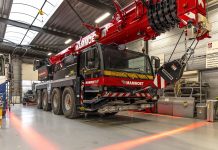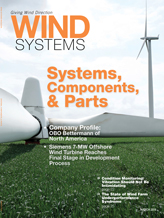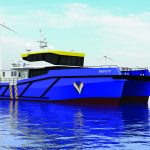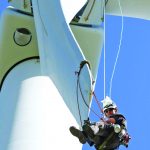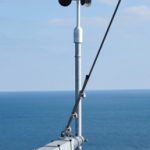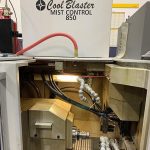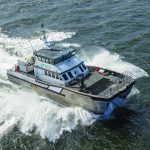It is fair to expect that the energy output of an operating wind farm should be close to what it was designed to produce. If the wind conditions for a particular site are well-measured and the selected turbine is a well-known model, then logic would conclude that the energy prediction process is fairly straightforward. But is this an oversimplification? Industry experience has shown that it is, since the majority of operating wind farms don’t meet their predicted P50 energy values in an average year.
The “underperformance syndrome” has been well-known within wind energy circles for years (recognizing that it could also be called the “overprediction syndrome”). The reasons for the phenomenon are now reasonably understood, but this wasn’t the case 10 years ago. At that time, wind farms were falling short in production on average by roughly 10 percent relative to pre-construction estimates made several years earlier. Significant progress in both wind farm diagnostics and modeling techniques has reduced the observed energy shortfall by more than half for most modern projects. So, while the gap has narrowed, why hasn’t it disappeared altogether?
Origins of Production Shortfalls
First, let’s look at the forces behind the original shortfalls and how they’ve been addressed. In the late 1990s and early 2000s, the wind industry was primarily focused on development and did not have the sophisticated wind farm operations management systems that are in place today. Still in the emergent phase, the industry hadn’t yet built the critical mass of operational history needed to signal a widespread underperformance problem.
There was a communications problem, too. The development and operations sides of many wind energy companies effectively operated as separate businesses with differing motivations. A company team responsible for getting projects developed had little interaction with the team responsible for construction and operations, so there was little opportunity for constructive feedback. Even third-party contractors involved in making pre-construction estimates of future energy production were kept in the dark about how the wind farms they had a hand in designing were actually performing. Performance and maintenance data was closely held and not shared outside the company.
Today’s Wind Industry
The industry has since matured. There is a much larger base of operational experience now available, and communications on performance issues are more open. Once wind plant performance data became more widely shared, it was quickly learned that the main contributors to the underperformance syndrome were higher-than-expected losses related to wind farm availability and sub-optimum turbine performance. Lesser factors included larger-than-modeled wake losses and unrepresentative wind resource data.
In the early days, a wind plant’s availability was often predicted to be around 97 percent or equal to the contractual or warranted value established between the developer and the turbine supplier. This assumption overlooked non-contractual availability factors, such as the impacts of high-wind events or delays in getting spare parts. Occasional grid outages were also ignored. And, due to teething issues, first-year availability was typically lower than in later years. Current estimates for availability losses — as verified by wind farm data — are far more encompassing and average around 6 percent for a typical wind farm.
Although a wind farm is “available” and operating, it does not necessarily mean it is operating at peak efficiency. In fact, sub-optimum performance is a common source of underperformance that is about twice as large as was first assumed in the past. Contributing factors include blade pitch or yaw misalignments, anemometer calibration drift, and other control setting errors. The turbine’s actual power curve is another loss source because it often does not match up with the official or advertised density-adjusted power curve, as seen in Figure 1. High-wind events that trigger a wind turbine to shut down and undergo a restart cycle when winds lighten (known as the wind hysteresis effect) are another source of lost energy. All told, typical performance-related losses among wind farms are around 4 percent.
 Other Underperformance Factors
Other Underperformance Factors
Another performance factor found for some projects has been the change in the as-built wind farm design compared to the planned design the energy analysis was based upon. It is not unusual for some last-minute design changes to occur in response to unforeseen permitting or construction constraints. Any change in the turbine layout or hub height will impact energy production to some degree.
Many underperforming wind farms had deficient wind measurement campaigns. In some cases, too few meteorological masts were deployed for the project’s large footprint or complex terrain, and mast placement may have favored the highest terrain rather than a cross-section of elevations. This can lead to a biased, optimistic outcome when modeling the wind resource at every turbine location. Today, software tools such as Openwind are available to guide mast placement for the most representative results. Measurement campaigns that don’t observe wind conditions at hub height (or higher) risk missing unexpected changes in wind shear and wind veer that could negatively impact turbine performance.
Unconsidered factors can play a role in the underperformance syndrome as well. Grid and environmental curtailments, as well as the impacts of newly built wind farms on nearby existing ones, can be sources of production losses that were often not accounted for in past pre-construction energy estimates. This was intentional in some cases, and it was hard to quantify in others. Nonetheless, these items can be significant performance factors, resulting in energy shortfalls of up to several percent relative to original predictions.
Project location is often a factor in underperformance, too, particularly in mountain gaps or valleys with shallow thermal wind flows, such as California’s Tehachapi Pass. In these environments, wakes can last longer and wind shear can relax with height — both of which can penalize performance. Northern climates prone to icing, such as ridgetops in New England and Quebec, can be problematic, too. Icing can cause turbines to suffer outages or reduced production for extended periods during the windiest time of the year. Since ice deposition and its persistence on objects are not directly measured during a wind resource measurement campaign (and not during turbine operations, either), predictions of icing-related production losses can be hard to make. At some wind farms, ice-related production losses have been found to be two to three times greater than original estimates.
Portfolios Versus Projects
Insights gleaned from the investigation of hundreds of wind farms have greatly reduced the magnitude of the underperformance syndrome. Across a large portfolio of projects, the mean performance bias is likely to be small — on the order of -2 percent or less when using the latest assessment techniques. Individual projects, however, may still see larger deviations for any number of reasons. This should be no surprise given that portfolio members are built at different times by different installers using different turbine models that are connected to different grid systems in different weather regimes using different O&M providers. Some risks are unavoidable if good practices during the development, construction, and operations phases are inconsistently followed. Inferior resource assessment campaigns or errors in blade pitch and wind vane alignment during construction will have their consequences, too. The caliber of the wind farm’s O&M program is another important factor.
There is a tendency to downplay or ignore risks that cannot be easily quantified. Pre-construction energy uncertainty estimates are largely an exercise in quantitative risk assessment, which works well with well-behaved sources of losses and uncertainty such as measurement errors. It works less well with poorly understood or less easily predicted risks such as installation errors and grid curtailment. Qualitative assessments can be valuable and should be included in preconstruction energy studies where appropriate. Anticipating potential problems at an early stage gives the most chance of dealing with them effectively.
Conclusion
What can be done to address underperformance before it happens? First, it is important that stakeholders involved in project development, financing, construction, and operations recognize that they each have a role to play and share responsibility in a project’s outcome. Breaking down walls that prevent communications between stakeholders will create opportunities for change. Second, better project risk assessment and management practices are needed. Risk assessment defines the nature of risks, their probabilities, and their consequences, and risk management encompasses the actions taken to accept, assume, and manage risk. Third, independent engineers can be an integrating force across project stakeholders and phases to provide overarching industry guidance. They possess the specialized technical and analytical skills to diagnose problems and recommend cost-effective solutions. Lastly, maximizing project availability should not come at the expense of energy production. Although it is harder to maximize production, the underperformance problem won’t be fully resolved until priorities get straightened out.
















